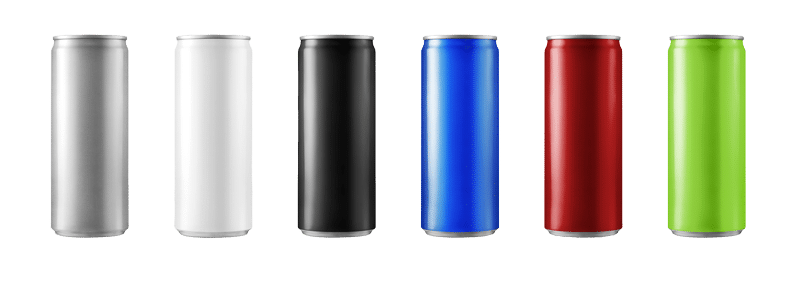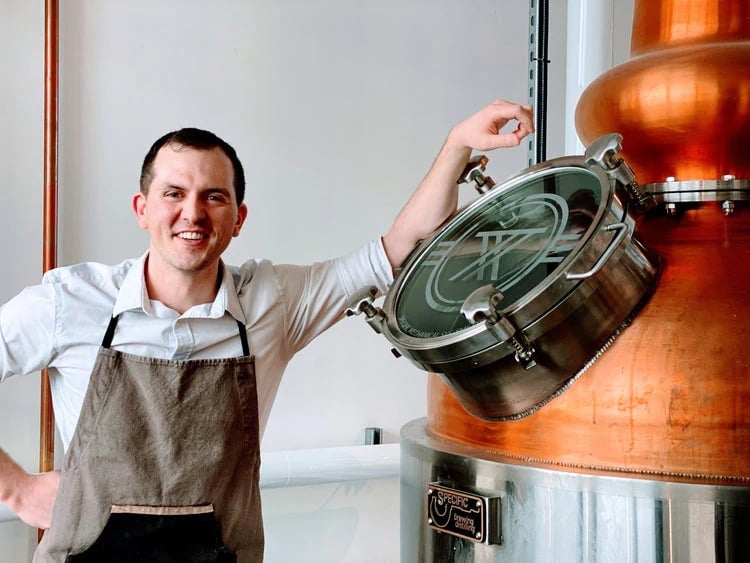Building a bottle shop in wine country, we’re surrounded by devotees of terroir. This tough-to-pin-down concept is usually defined as the sense of place imparted on wine from the subtleties of its growing conditions. Geography, climate, soil; all these minutiae are said to come together in the bottle, capturing time and place within the liquid.
At his new distillery, Ogham, Adam Brierley aims to do the same for spirits. Located in Ottawa, the distillery’s approach to local spirits has already forged new ground in defining Eastern Ontario’s terroir. Adam and his team don’t do things the easy way; the harsh seasonality and unforgiving geography of the Ottawa Valley mean each batch contains ingenuity and some of the toughness of local farmers. At the same time, Ogham must navigate the relentless financial and bureaucratic headwinds that still define Ontario’s spirits industry.
The team at Ogham are defining the taste of their region and infusing spirits with local character in new and exciting ways. Archives managed to catch Adam between busy days at the still and in the country sourcing ingredients, and we spoke about his unique approach to spirits.
AWSM: How did you get into the distilling industry?
Adam: Whenever travelling somewhere new I make sure to head to a pub and see if there’s a local distillery, brewery, or winery to visit. There is so much culture and history in the local production of spirits. I strongly believe that if you want to get an idea of who people are – engage with what they drink and where they drink. I have on several occasions returned to Ottawa after a trip abroad and wondered where our local equivalent was. Local brewers here have carved out a wonderful identity for what Eastern Ontario brewing is about and I realised there was an opportunity to accomplish the same with spirits. About nine years ago now I started exploring what it would take to open a distillery, and it was by no means easy or financially feasible. I spent the next few years nursing my business plan and finding ways to educate myself. I trained in Chicago and Kelowna, and kept a keen eye on how the law in Ontario was evolving for distillers. It looked like the stars had finally aligned for me at the end of 2019, and then of course the world shut down in 2020.
What was it like actually building and opening the distillery?
More complicated than I expected, to be honest. I’m used to working within budgets and tight schedules, but construction through Covid was something else. We were supposed to be open for December 2020, but when our equipment was delayed from November to May 2021 due to the rolling shutdowns, the schedule went out the window. We didn’t end up opening until September 2021, almost a full year behind schedule. It’s not something I’m hoping to do again soon. Although when we do expand, I’ll be much better prepared.
What’s the story behind the name Ogham?
Ogham is an ancient Irish alphabet dating back to the 4th century where each of the letters are named after various trees. These intriguing symbols are a reminder that we can always draw inspiration from the environment around us. At Ogham Craft Spirits, this inspiration guides us to create spirits that faithfully represent the land they come from.
Do you have a distilling ethos or approach to crafting spirits?
Absolutely! First and foremost, our ingredients have to be local. My goal is to create the best spirits that represent the land around us, not to try and replicate a foreign flavour. I think we should take pride in the flavour of here. We started working with local farmers on day one, and 100 percent of the grain we use comes from the Ottawa Valley. If we don’t support the people down the road from us now, they won’t be there when we need them later.
Our second tenet is transparency. There’s a lot of careful wording in the spirits industry that misleads consumers. “Bottled by” is an excellent example of that. That’s just the company who took it from the tank and put it into the bottle; they didn’t produce the product. At Ogham I made sure that we had a massive window from the tasting room into the production area so that even on days we’re entirely closed, people can look in through our windows and see the equipment, see the casks that are aging, see the stacks of grain… everything happens on site! Our products are our products – entirely so.
Underlying these other two tenets is sustainability. We’re using 100 percent recycled glass bottles and other recycled packaging materials. Sourcing local raw materials also helps to keep our carbon footprint low. Right now our spent grain is going to a cattle farmer, but we’re always on the hunt for other innovative and unique ways to dispose of the byproducts, such as partnering with local artisans.
Why do local ingredients matter to you? Can you tell us about some of the local ingredients you’ve used?
I want our products to represent here – the Ottawa Valley- instead of importing a flavour from somewhere else. I’m happy to take a crack at foreign styles of spirits, but the ingredients need to come from here. Our ethos in a nutshell is “if it grows in the Valley, then it goes in the bottle.”
Corn was the hardest ingredient to find, actually. I can practically throw a stone from the back door of the distillery and hit a corn field in just about every direction, but all were pre-sold. Ottawa Valley Grain Products in Carp put the word out that I was looking for local corn and a month or so later one farmer said he had 100kg left, and that if I wanted it they would bag it for me. Since then, we haven’t had a single problem finding quality local grain. Our other grains are unmalted barley, malted barley, and hulless oats, all from farms in the Ottawa Valley. We have a really good relationship with our maltster, Dean, at Mississippi Mills Malting. He’s been taking our feedback from every mash and keeps finding better ways to help our yield. The malt we’re getting from him now is tailored to us, and we know we’re the only ones using it.
Our first seasonal collaboration was in partnership with Farmgate Cider, near Arnprior. We took some of their North Road cider and distilled it into a lovely aperitif. The casks that are holding our whisky, currently, are made from Canadian oak by a cooper in St George, Ontario.
If it’s available locally, it isn’t even a question for us – that’s who we’re proud to support.
Gin is a particularly good vehicle for local ingredients because botanicals play such an important role in the flavour profile. What have you got cooking for your next batch?
For batch three of our gin, we were fortunate enough to pick the juniper berries ourselves in Mississippi Mills. They’re giving this batch a bright piney aroma and peppery finish. We’ve also started a project with Roam Flora in Carp to grow and age orris root. The plan is to transition to them exclusively in two years once the orris is cured. [AWSM: orris root adds a subtle depth to gin and binds the flavours together]
Some say spirits can’t have terroir due to the molecular-level destruction inside a still. Do you think spirits can show terroir, and if so, how do you manifest that in yours?
I think our batch three gin is an excellent example of that. It was our first time picking juniper berries ourselves – just up the road in Mississippi Mills. These berries gave us much more pine and peppercorn compared to the previous two batches. In our apple Eau-de-vie experiments, it was apparent which sample was made from Northern Spy compared to other varietals. For aged spirits, different woods have different effects on the maturation of a spirit. While I certainly can’t tell you the difference between if the barley I’m using was grown in limestone or clay, I think there are still plenty of ways to impart a sense of place into every spirit. Don’t forget that ‘tradition’ is one of the four elements of terroir – that includes finishing effects on the spirit such as proofing and aging.
You’ve got whisky ageing now, what’s that like and when are you planning to release it?
Our poitín is the exact same recipe as what we’ve laid down in oak. Our early aging experiments matured into flavours of green apple and vanilla in addition to cut grass and malt that are already present in the base spirit. Cask one will be opened in October 2024, and then we hope to have it approved by the LCBO lab and bottled by the end of November. We already have 100 bottles pre-sold and are planning to release another fifty with tasting notes when we check on it in October 2022.
Where do you see Ontario’s distilling scene heading in the future?
I really hope that our province adopts a model similar British Columbia, where small producers receive a favourable tax rate for sourcing entirely local ingredients. I don’t think the average person knows how much tax is factored into each bottle, and how little of every bottle actually goes to the distillery. The BC model has led to a flourishing spirits industry where they have about seventy distilleries compared to thirty or so in Ontario, even with a population one-sixth what we have here. I think that customers will become more educated and aware of product types and manufacturing processes in the next few years. We saw this through the craft beer boom; rewind 15 years and consider how many people knew about hops and IBUs versus now.
Ogham’s Cinnamon Hibiscus Gin Fizz
Enjoy Ogham’s Pot Still Gin in this Valentine’s-inspired cocktail:
1 oz Ogham Craft Spirits Pot Still Gin
1.5 oz Cinnamon Hibiscus Syrup
Club Soda
Ice
Cinnamon Hibiscus Syrup:
½ cup sugar
½ cup water
½ cup Hibiscus petals
2 Cinnamon sticks, whole
Instructions
Combine cinnamon sticks, Hibiscus petals, sugar and water in a small sauce pan. Bring to a boil, then reduce to a simmer for 5-6 minutes until the mixture takes on a deep burgundy hue.
Remove from heat and strain the syrup into a container, using a sieve to separate the solids. Allow the syrup cool to room temperature before using.
To make your cocktail, use a rocks tumbler, and add a cinnamon stick. Next, fill your tumbler with ice, and pour your gin, syrup, and club soda (approx. 6 oz.) into the glass. Stir, garnish with hibiscus petals, and enjoy!


